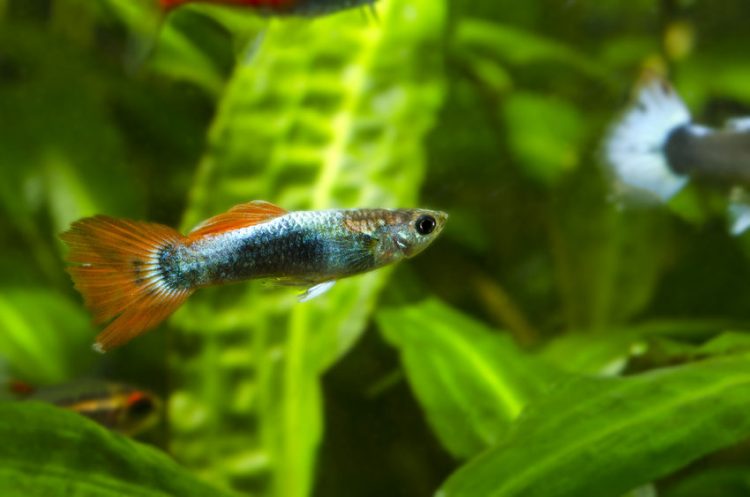Taking a molecular approach to conserving freshwater biodiversity

As the world’s population grows, human water needs are growing accordingly, reducing the amount of water available for sustaining freshwater biodiversity. Copyright : lapis2380
By applying DNA sequencing and related tools, molecular ecologists can collaborate with other ecologists, especially in the fields of species distribution modelling and conservation planning, argues the paper’s author, Jane Hughes, of the Australian Rivers Institute.
“This approach will help to prioritise conservation actions for the best possible outcomes.”
As the world’s population grows, human water needs are growing accordingly, reducing the amount of water available for sustaining freshwater biodiversity. This situation will likely worsen in areas where rainfall decreases as a result of global climate change.
Growing human demand for water will affect biodiversity primarily by increasing the number of dams, which already number over one million globally, as well as the extraction of water for agriculture and aquaculture. “Already, declines in freshwater biodiversity are far greater than in terrestrial systems [i.e. ecosystems present on land],” notes Dr Hughes.
For competing needs to be managed, we need accurate and efficient ways to assess our biodiversity, she stresses. “Currently, species are going extinct more quickly than we can recognise them.”
We also need accurate and efficient ways to assess the current and historical connectivity among populations, as well as the need for freshwater species to maintain connectivity with other habitats such as the floodplain or the estuary, adds Dr Hughes. “Finally, we need to develop methods for prioritising which rivers, streams or reaches should best be preserved or protected in order to maximise protection of biodiversity.”
Molecular ecologists can contribute to these challenges in many ways, says Dr Hughes. In her paper, she discusses recent advances in the assessment of biodiversity, methods for assessing connectivity among aquatic populations, how to combine molecular approaches with other methods to understand migration patterns, and future options that could improve our ability to conserve freshwater biodiversity.
“A multidisciplinary approach that incorporates new technological approaches in acquisition of molecular data is the best way forward for our aquatic biodiversity,” she concludes.
For more information about each research, please contact:
Professor Jane M. Hughes
Australian Rivers Institute
Griffith University,
Nathan Queensland 4111,
Australia
Email: Jane.Hughes@griffith.edu.au
Tel: +(617) 373 57376
About Pertanika Journal of Tropical Agricultural Science (JTAS)
Pertanika Journal of Tropical Agricultural Science (JTAS) is published by Universiti Putra Malaysia in English and is open to authors around the world regardless of nationality. The journal is published four times a year in February, May, August and November. Other Pertanika series include Pertanika Journal of Science & Technology (JST), and Pertanika Journal of Social Sciences & Humanities (JSSH).
JTAS aims to provide a forum for high quality research related to tropical agricultural research. Areas relevant to the scope of the journal include: agricultural biotechnology, biochemistry, biology, ecology, fisheries, forestry, food sciences, entomology, genetics, microbiology, pathology and management, physiology, plant and animal sciences, production of plants and animals of economic importance, and veterinary medicine. The journal publishes original academic articles dealing with research on issues of worldwide relevance.
Website: http://www.pertanika.upm.edu.my/
The papers are available from these links:
http://www.pertanika.upm.edu.my/Pertanika%20PAPERS/JTAS%20Vol.%2038%20(4)%20Nov.%202015/01%20ED07-2015%20-%20Invited%20review%20Article.pdf
For more information about the journal, contact:
The Chief Executive Editor (UPM Journals)
Head, Journal Division, UPM Press
Office of the Deputy Vice Chancellor (R&I)
IDEA Tower 2, UPM-MDTC Technology Centre
Universiti Putra Malaysia
43400 Serdang, Selangor
Malaysia.
Phone: +(603) 8947 1622 | +(6016) 217 4050
Email: nayan@upm.my
Date of Release: 6 November 2015.
Acknowledgements
The Chief Executive Editor, UPM Journals
Associated links
Pertanika Journal website
Read the research paper
Media Contact
More Information:
http://www.researchsea.comAll latest news from the category: Ecology, The Environment and Conservation
This complex theme deals primarily with interactions between organisms and the environmental factors that impact them, but to a greater extent between individual inanimate environmental factors.
innovations-report offers informative reports and articles on topics such as climate protection, landscape conservation, ecological systems, wildlife and nature parks and ecosystem efficiency and balance.
Newest articles

Recovering phosphorus from sewage sludge ash
Chemical and heat treatment of sewage sludge can recover phosphorus in a process that could help address the problem of diminishing supplies of phosphorus ores. Valuable supplies of phosphorus could…

Efficient, sustainable and cost-effective hybrid energy storage system for modern power grids
EU project HyFlow: Over three years of research, the consortium of the EU project HyFlow has successfully developed a highly efficient, sustainable, and cost-effective hybrid energy storage system (HESS) that…

After 25 years, researchers uncover genetic cause of rare neurological disease
Some families call it a trial of faith. Others just call it a curse. The progressive neurological disease known as spinocerebellar ataxia 4 (SCA4) is a rare condition, but its…





















